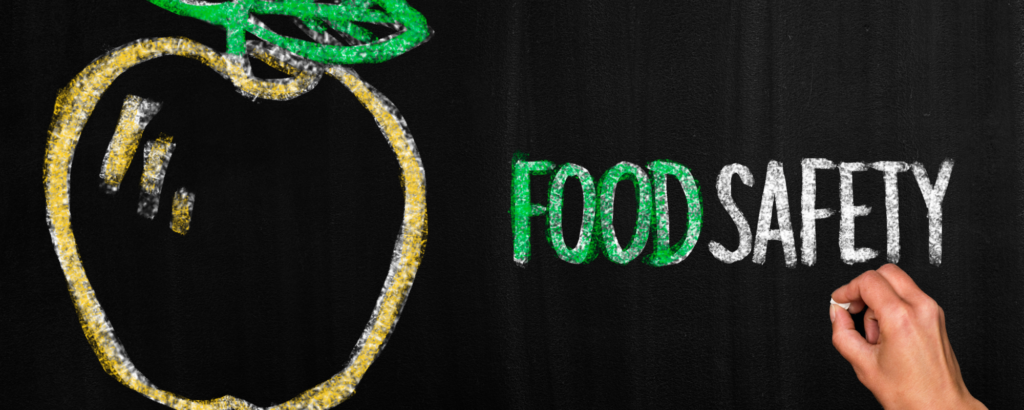June 21, 2023
Food Safety at Home: Cooking, Storing, and Beyond
Food Safety at Home: Cooking, Storing, and Beyond

It’s easy to overlook the importance of food safety at home. However, practicing proper food safety measures is not only essential for preventing foodborne illnesses but also ensures the overall well-being of you and your family. By understanding the correct cooking temperatures, proper food storage techniques, and the shelf life of various foods in the fridge, we can take proactive steps to safeguard ourselves and our loved ones from potential health risks.
Cooking Food to the Correct Temperature
One of the fundamental pillars of food safety is cooking food to the appropriate temperature. Proper cooking kills harmful bacteria, viruses, and parasites that may be present in raw ingredients. Here are a few examples of the recommended internal temperatures for commonly cooked foods:
- Poultry: Chicken and turkey should be cooked to an internal temperature of 165°F (74°C) throughout the meat, ensuring it is no longer pink and the juices run clear.
- Ground Meats: Ground beef, pork, veal, and lamb should be cooked to an internal temperature of 160°F (71°C), making sure there are no traces of pink or red.
- Seafood: Fish, shrimp, scallops, and other seafood should be cooked until they reach an internal temperature of 145°F (63°C). The flesh should be opaque and flake easily with a fork.
- Pork, Veal, and Lamb: These meats should be cooked to an internal temperature of 145°F (63°C), with a slight blush of pink in the center.
- Steaks, Roasts, and Fish: These items can be cooked to varying degrees of doneness, with the recommended internal temperature ranging from 145°F (63°C) for medium-rare to 160°F (71°C) for medium-well.
By using a food thermometer to verify the internal temperatures, we can ensure that our meals are safe and free from harmful pathogens. You can find inexpensive food thermometers at most grocery stores.
Proper Food Storage Techniques
Effective food storage is another critical aspect of maintaining food safety at home. By following these guidelines, we can significantly reduce the risk of foodborne illnesses:
- Refrigeration: Refrigerate perishable foods promptly. Keep the refrigerator temperature below 40°F (4°C) and the freezer at 0°F (-18°C) or below. Bacteria multiply rapidly at temperatures between 40°F (4°C) and 140°F (60°C), known as the “danger zone.”
- Leftovers: Store leftovers in shallow, airtight containers to promote rapid cooling and prevent bacterial growth. Consume refrigerated leftovers within 3-4 days, ensuring they are heated to an internal temperature of 165°F (74°C) before eating.
- Raw Meats: To prevent cross-contamination, store raw meats, poultry, and seafood in separate sealed containers or plastic bags on the lowest shelf of the refrigerator. This ensures that any potential drips do not contaminate other foods.
- Freezing: Freezing can extend the shelf life of various foods. However, it’s crucial to use freezer-safe containers or bags and label them with the date of freezing. Different foods have varying freezer storage times, but generally, most frozen items can be safely consumed within 3-6 months.
Shelf Life of Foods in the Fridge
To avoid consuming spoiled or expired foods, it’s essential to be aware of the shelf life of various items stored in the refrigerator. Here are a few general guidelines:
- Dairy Products: Milk typically remains fresh for about 7-10 days after opening, while cheese can last 3-4 weeks. However, always check for signs of spoilage, such as a sour smell or mold growth, before eating/drinking.
- Eggs: Eggs can generally be stored in the refrigerator for 3-5 weeks from the date of purchase. To check if an egg is still fresh, place it in a bowl of water. If it sinks to the bottom and lies horizontally, it is fresh. If it stands upright or floats, it’s best to discard it.
- Fruits and Vegetables: Most fruits and vegetables have varying shelf lives. Leafy greens typically last for about 3-7 days, while heartier vegetables like carrots and broccoli can last up to 2 weeks. Keep in mind that some fruits release ethylene gas, which can accelerate the ripening process of nearby produce. Store fruits and vegetables separately to prevent premature spoilage.
- Meat and Poultry: Raw meats and poultry should generally be consumed within 1-2 days of purchase. Cooked meats, on the other hand, can last 3-4 days in the refrigerator. However, always use your judgment and assess the quality of the meat before consumption. If it smells off or appears slimy, it’s best to discard it.
- Condiments and Sauces: Many condiments and sauces, such as ketchup, mustard, and mayonnaise, have a relatively long shelf life when refrigerated. However, be sure to check the expiration dates and discard any expired or visibly spoiled products.
By prioritizing food safety practices in our homes, we demonstrate our commitment to the health and well-being of ourselves and our loved ones. Let’s make conscious choices, follow proper guidelines, and create a safe environment where delicious meals and good health go hand in hand.
BACK TO ALL
Comments
There aren't currently any comments on this blog entry.